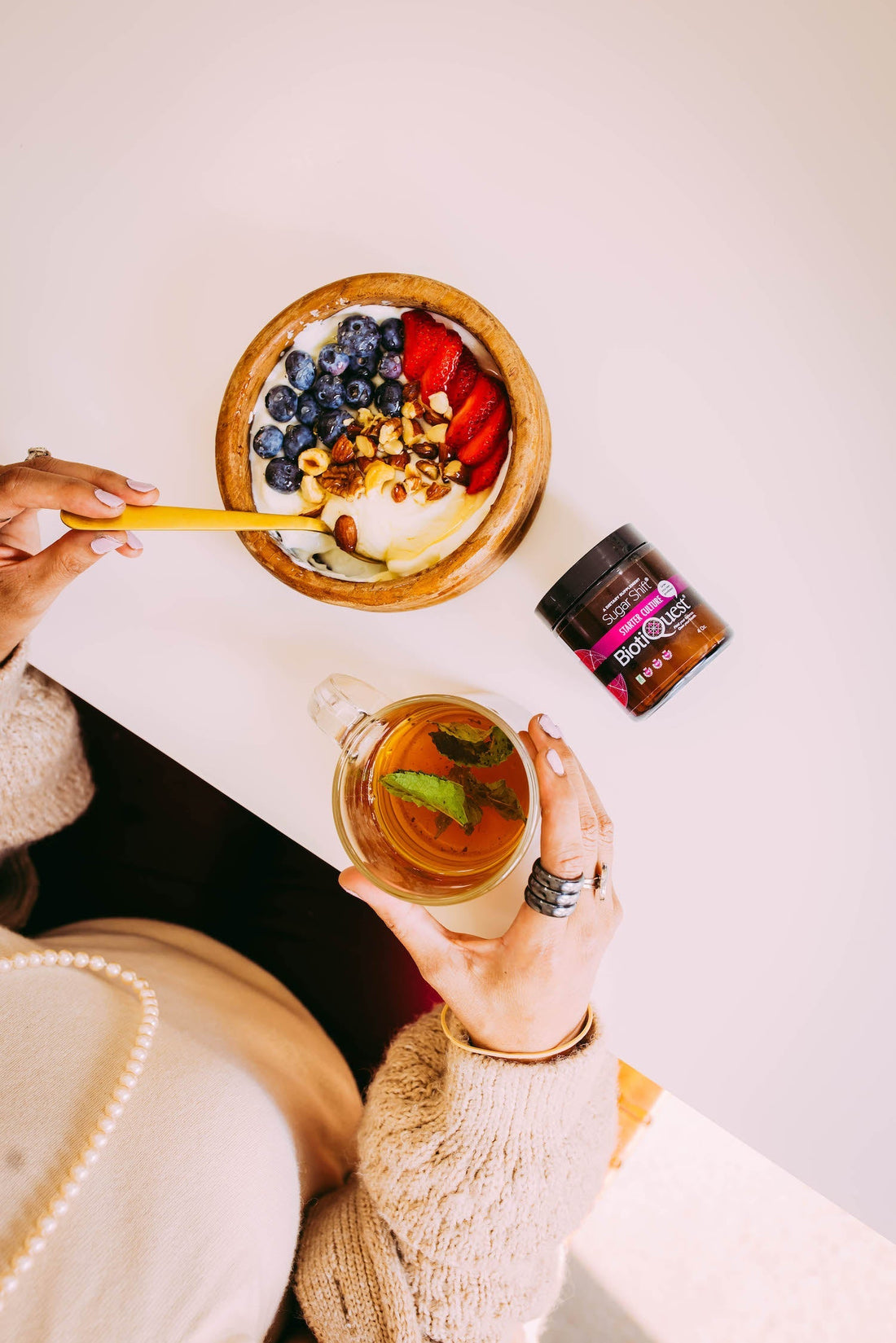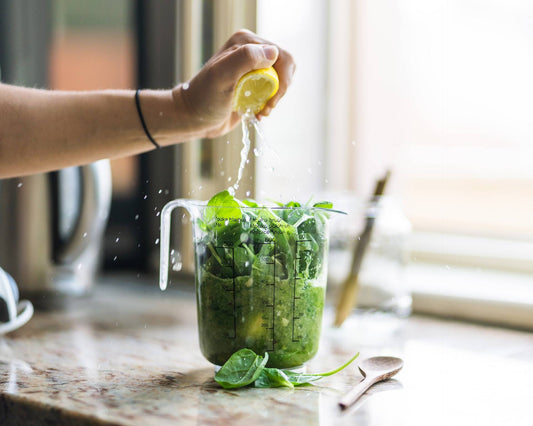
The Art and Science of Making Yogurt at Home: Understanding Parent & Child Batches, Strains, Temperatures, and Milk Choices

Making yogurt at home is a beautiful intersection of art and science. While it relies on precise microbial principles, there’s a creative element that makes each batch unique, much like a painter layering brushstrokes onto a canvas. In this blog, we’ll explore some of the finer details of yogurt-making, with a special focus on parent and child batches, the differences between single-strain and multi-strain cultures, temperature nuances, and milk choices. Let’s dive into this creamy world and uncover how to create your perfect yogurt.
What Are Parent and Child Batches of Yogurt?
 If you’ve ever made yogurt at home, you may be familiar with the idea of using some of your previous batch as the “starter” for your next one. This method creates what are called parent and child batches:
If you’ve ever made yogurt at home, you may be familiar with the idea of using some of your previous batch as the “starter” for your next one. This method creates what are called parent and child batches:
- The parent batch is the first yogurt you make from your starter culture, whether that’s a powdered blend or a fresh probiotic like our Sugar Shift® Starter Culture.
- A child batch is made by taking 1-2 tablespoons of the parent batch and adding it to fresh milk, allowing the same microbial strains to ferment the new batch.
It’s worth noting that if you make a second batch using the "child" batch, that second batch becomes a new parent, unless you are retaining some of the original batch for starters. The subsequent batch is then considered a child once removed, or even a "grandchild." As you continue this process, microbial drift can occur, and the yogurt will begin to change from the original parent batch over time. This is particularly relevant when using multi-strain blends (more on this below).
Single-Strain vs. Multi-Strain Cultures: How They Drift Over Time
In yogurt-making, microbial drift refers to the gradual changes in the population of strains during fermentation cycles. This becomes important when making multiple child, grandchild, and even great-grandchild batches.
Single-Strain Cultures
Single-strain yogurts (e.g., those made with Lactobacillus reuteri or Bacillus coagulans, two popular strains used by Dr. William Davis’s followers) are fairly stable. Because there’s only one type of microbe in the culture, there’s no competition between strains. This allows the strain to reproduce across multiple child batches (or even grandchild and great-grandchild batches) without significant drift.
However, it’s still worth noting that strain drift can occur over time due to environmental factors like temperature, milk type, or slight contamination. Different strains grow at different rates (see our growth curve chart for more on this), which can also influence how well the yogurt retains its consistency and flavor. So even in single strain yogurts it is important to return to the original starter culture regularly.
Multi-Strain Cultures
Multi-strain blends, like our Sugar Shift Starter Culture, are more complex ecosystems. These blends contain carefully selected strains that work together synergistically, often with specific health-supporting benefits. However, when used to make yogurt:
-
Multi-strain cultures tend to drift more quickly because different strains grow at different rates, and certain strains may outcompete others during fermentation.
-
Environmental factors such as temperature, fermentation time, and milk composition further influence this shift.
As a result, when making yogurt with multi-strain blends, we recommend making only one child batch from the parent batch. Beyond that, it’s best to start fresh with a new parent batch to ensure you’re still benefiting from the intended balance of strains.

The Sugar Shift Growth curve, which shows in 12 hours that L.reuteri growth is accelerating above the other strains.
Should Inulin be Added?
The BiotiQuest Sugar Shift Starter Culture already has chicory inulin in it, but single strains do not have any inulin so you do need to add it. You can add 1 Tablespoon if you want, but it’s really not necessary, and too much inulin or FOS can make for faster growth and more whey at the end.
The Role of Temperature in Yogurt Fermentation
Temperature is a key factor in yogurt-making, influencing not only the texture and flavor but also the survival and activity of specific strains.
The Ideal Temperature Range
Yogurt can be made at temperatures between 95°F and 115°F, but we recommend aiming for 98°F to 100°F when using probiotic blends like Sugar Shift. This temperature mimics human body temperature, which can help probiotics adapt better to your gut environment. It also tends to produce a mild, smooth yogurt with a creamy texture.
Yogurt can be made at room temperature, it’s just a slower process. If you really think about it, when cultured milk was made in ancient cultures everything was done at ambient temperature and many of these strains like L.plantarum grew on plants at ambient temperatures with wide ranges. The same is true of B. subtilis.
High Temperatures and Strain Sensitivity
It’s important to understand that not all strains are heat-tolerant:
-
Strains like Streptococcus thermophilus and Lactobacillus bulgaricus are thermophilic, meaning they thrive at higher temperatures (105°F–115°F). These strains are commonly found in traditional yogurt cultures and are well-suited for higher heat.
-
Lactobacillus reuteri, on the other hand, is particularly heat-sensitive and can be killed at temperatures above 106°F. For this reason, Dr. Davis’s yogurt recipes recommend keeping fermentation temperatures below 106°F.
If you’re working with a specific probiotic culture, always refer to its temperature tolerance to protect the viability of the strains.

Milk Choices: Pasteurized, Ultra-Pasteurized, and Raw
The type of milk you choose plays a big role in the final texture, flavor, and nutritional profile of your yogurt. Always use organic milk when possible.
Ultra-Pasteurized Milk
Ultra-pasteurized milk is heated to higher temperatures than standard pasteurization. This process denatures milk proteins, which helps with coagulation and produces a thicker yogurt. It also eliminates natural microbes in the milk, reducing the risk of contamination. However, ultra-pasteurization destroys certain beneficial components, like lactoferrin, a protein with immune-supportive properties (see postscript below for more detail).
Raw Milk
Raw milk can be used to make yogurt, but it requires more care and attention:
-
To reduce the risk of contamination from strains naturally in the milk that might out compete your starter, raw milk is often pre-heated to about 165°F, then cooled to your fermentation temperature.
-
Yogurt made from raw milk tends to have a thinner consistency and may form a cream top due to its higher fat content. This cream layer can be blended or strained with cheesecloth to reach the consistency you prefer, and the whey can be used in soups or even smoothies as a good source of protein Alternatively, you can add powdered milk to the raw milk before fermenting to improve the texture.
-
Be sure to ask your farmer what the cows are fed with. Are they eating grass or silage? Often the silage will be GMO and have glyphosate residues that affect the milk quality.
Whole vs. Low-Fat Milk
Whole milk produces creamier, thicker yogurt, while low-fat or skim milk yields a lighter texture. However, we do not recommend low-fat products because fats play a critical role in our overall health and the structure of our cell membranes.
Yogurt as Art
Yogurt-making is as much an art as it is a science. While understanding the principles behind fermentation, strain drift, and temperature is important, there’s room to experiment and make the process your own. Each batch is a living creation, shaped by the choices you make and the environment you create for it.
By starting with high-quality ingredients, understanding your strains, and experimenting with temperatures and milk types, you can create a yogurt that’s not only delicious but also a reflection of your personal health journey.
A Closer Look at Lactoferrin
Lactoferrin is a multifunctional protein found in cow’s milk with many beneficial properties, including antibacterial, antiviral, antiparasitic, anti-inflammatory, and immunomodulatory activities. However, it’s highly sensitive to heat, and its biological functionality can be affected by the milk processing method:
-
pH Sensitivity: Lactoferrin retains its nativestructure and iron-binding capacity at pH levels of 3.0 to 5.0, with the highest amount of undenatured protein at pH 4.0. However, it loses its iron-binding capacity at pH levels of 6.9 to 7.5.
-
Pasteurization and Heat Treatment:
Pasteurized milk has a significantly lower concentration of lactoferrin than fresh raw milk. Heat treatment can cause denaturation and aggregation, leading to a loss of its biological functionality.
Fermentation cannot restore the biological functionality of lactoferrin once it has been denatured through pasteurization or heat treatment. While yogurt fermentation offers many benefits, such as replenishing beneficial microbes and creating bioavailable nutrients, it does not repair or reintroduce the immunoactive properties of lactoferrin.
Happy fermenting, and may your yogurt-making journey bring health, creativity, and joy!
With gratitude,

 Martha Carlin, is a “Citizen Scientist”,
systems thinker, wife of Parkinson’s warrior, John Carlin, and founder of The BioCollective , a microbiome company expanding
the reach of science and BiotiQuest, the first of it’s kind probiotic line. Since John’s diagnosis in 2002,
Martha began learning the science of agriculture, nutrition, environment, infectious disease, Parkinson’s
pathology and much more. In 2014, when the first research was published showing a connection between the gut
bacteria and the two phenotypes of Parkinson’s, Martha quit her former career as a business turnaround expert
and founded The BioCollective to accelerate the discovery of the impact of gut health on all human disease. Martha was a speaker at the White House 2016 Microbiome Initiative launch, challenging the scientific
community to “think in a broader context”. Her systems thinking background and experience has led to collaborations
across the scientific spectrum from neuroscience to engineering to infectious disease. She is a respected out of the
box problem solver in the microbiome field and brings a unique perspective to helping others understand the
connections from the soil to the food to our guts and our brains.
Martha Carlin, is a “Citizen Scientist”,
systems thinker, wife of Parkinson’s warrior, John Carlin, and founder of The BioCollective , a microbiome company expanding
the reach of science and BiotiQuest, the first of it’s kind probiotic line. Since John’s diagnosis in 2002,
Martha began learning the science of agriculture, nutrition, environment, infectious disease, Parkinson’s
pathology and much more. In 2014, when the first research was published showing a connection between the gut
bacteria and the two phenotypes of Parkinson’s, Martha quit her former career as a business turnaround expert
and founded The BioCollective to accelerate the discovery of the impact of gut health on all human disease. Martha was a speaker at the White House 2016 Microbiome Initiative launch, challenging the scientific
community to “think in a broader context”. Her systems thinking background and experience has led to collaborations
across the scientific spectrum from neuroscience to engineering to infectious disease. She is a respected out of the
box problem solver in the microbiome field and brings a unique perspective to helping others understand the
connections from the soil to the food to our guts and our brains.


Waking Up to a Probiotic Breakfast Can Do Wonders for Your Gut Health
Did you know that recent studies show people with poor gut diversity had lower quality of life? The health of your microbiome impacts your mental health, sleep, energy, the risk for chronic illnesses, and much more. A probiotic breakfast can...

Can Probiotic Supplements Make or Break Your Fast?
Intermittent fasting (IF) may have started as a fitness trend for weight loss, but today it's a go-to lifestyle choice for many. Practicing intermittent fasting has been linked with health benefits such as lowering blood sugar and insulin, preventing heart...














 Martha Carlin
Martha Carlin







